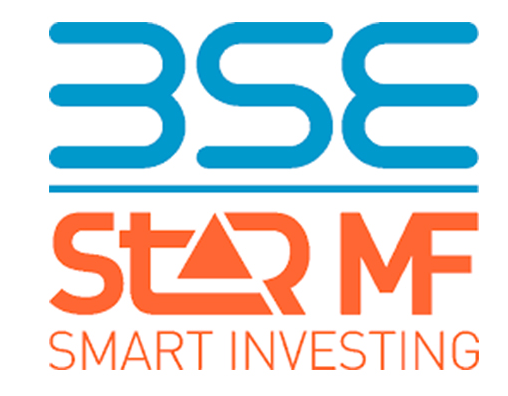The Indian indices were high by early December on the back of expectations that interest rates would stabilize and not much further tightening would happen. The Ukraine War is still raging, and the final word on the US recession is still not out. It is an open secret; everyone talks about it, but the markets are not reflecting that. As investment advisors, wealth managers, or portfolio managers, it is important to share information about key economic developments and how they may impact our clients’ investments.
The US economy and pretty much the global economy are not in great shape. There are headwinds in terms of higher interest rates, and global geopolitics will linger. Indian indices have weathered the twin storms of the global recession and the geopolitical Ukraine crisis. This may not be sustainable if the US slips into a sharp recession or if their markets correct sharply.

US & Global Economy Impact on Equities
US interest rates are likely to remain higher for longer. The current rates are the highest in 15 years. Despite a 2.9% GDP growth in the third quarter, retail sales fell in November, and a recession threatens the world’s largest economy. The business confidence, manufacturing PMI, and services PMI are also down, although the non-manufacturing PMI is marginally up.
On the other hand, China’s GDP growth has been 3.9%. Inflation is a low 1.6%. Hence their interest rates are stable at 3.65%. Retail sales, consumer confidence, services PMI, and non-manufacturing PMI are all down, though manufacturing PMI is slightly up. There have been protests for lifting the lockdown resulting in curbs being removed. We expect economic growth rates to increase.
Japan is seeing negative GDP growth with an increase in inflation. High current account deficits and high government debt to GDP are negatives for the economy. Like in the US, business confidence, consumer confidence, PMI, and numbers are all at very low levels.
Europe is giving mixed signals: Eurozone private investment continues to decline, though at better-than-expected rates. Their business confidence is higher. Oil prices are down but can rise sharply in the winter. Thankfully, a less severe winter is being predicted. The story is not very different for the UK, which is also seeing a decline in retail sales.
Indian Economy
Over the long term, India remains on a strong footing with all the structural reforms in place. Valuations are lower than they were during most of 2021. With all the structural reforms in place and the focus on infrastructure and manufacturing incentives, we expect earnings growth to continue. The impact of higher input costs due to inflation has likely abated. This could translate to a 15% p.a. growth in earnings for 2023 and 2024. Other than a massive global recession, this expectation should play out over the next couple of years.
The markets do factor in earnings growth in the short term, i.e., the next two years. India is planning
a 176% increase in capital expenditure. The government’s net tax revenues during the period reported a healthy growth of 11% just in the last seven months of this financial year. Real GDP also grew 9.7% YoY in H1FY23. Exports are on the upswing, and oil prices are getting stable. The equity markets, in our view, are assuming long-term secular growth.
Here are some of the reasons we believe India is well-positioned:
- Though growth estimates are cut, India is still the fastest-growing economy
- Credit growth, Government Capex to keep Investment up.
- Inflation is 5.88%, projected to soften further, but we are yet to see below 5% projections. RBI intends to first keep inflation below the tolerance level of 6%, but the target is 4.5%.
- Interest rate hikes have not been ruled out, but most likely have plateaued
- CAD -1.2%. This is below the 3-4% of GDP which is considered to be sustainable for a developing economy,
- Manufacturing PMI, Services PMI, Business Confidence, Consumer Confidence all Up
- Both Direct and Indirect Tax collections have been buoyant. As a result, despite the increase in Govt spending, the Fiscal deficit has remained in control.
- Commodity prices are coming down, which can result in better performance of companies in the coming quarters. Oil is likely to touch USD75.
- FII Flow positive since April 2022 (except for a small dip in June 2022)
Conclusion
As an investor, one has many questions related to equities that are posed to investment advisors, wealth managers, or portfolio managers. It is our duty to call out the way things are without any conflict of interest. As SEBI Registered Investment Advisors, it is our fiduciary responsibility. So here it is: while we have had recent all-time highs, the geopolitical and global recession bad news is still not over. So our outlook as of now is stable. With the indices having recently risen, one should temper expectations in the near term. A slowing global economy will impact external demand, resulting in a slowdown of the Indian economy.
We believe that investors should stay cautious given the worries about the US slipping into a pronounced recession. The corollary is that one must maintain their asset allocation as suggested by their registered investment advisor, and take advantage of any sharp down moves that the market may offer from time to time. Long-term monthly investments can continue.
Stay updated with the latest market and investment updates. Join Jama Wealth on Telegram, Linkedin, YouTube, Instagram, Facebook, Quora for more!
For high quality investment advice and to grow wealth, download Jama Wealth App on iOS App Store and Android Play Store.






















